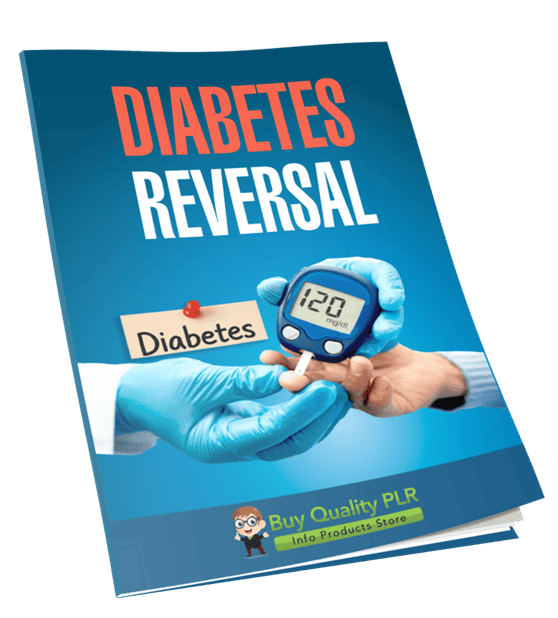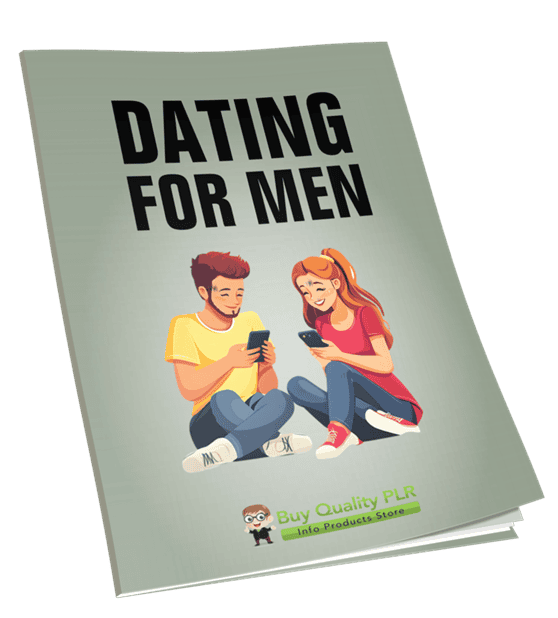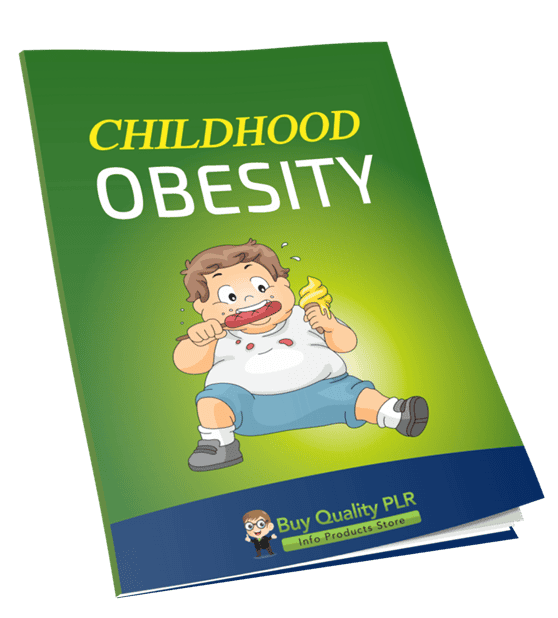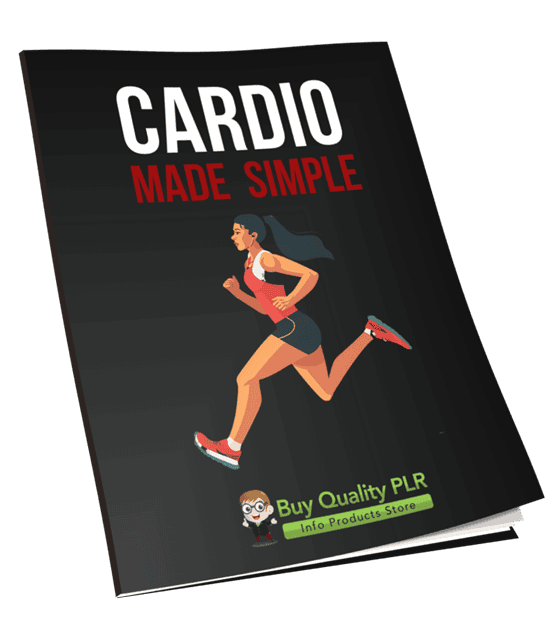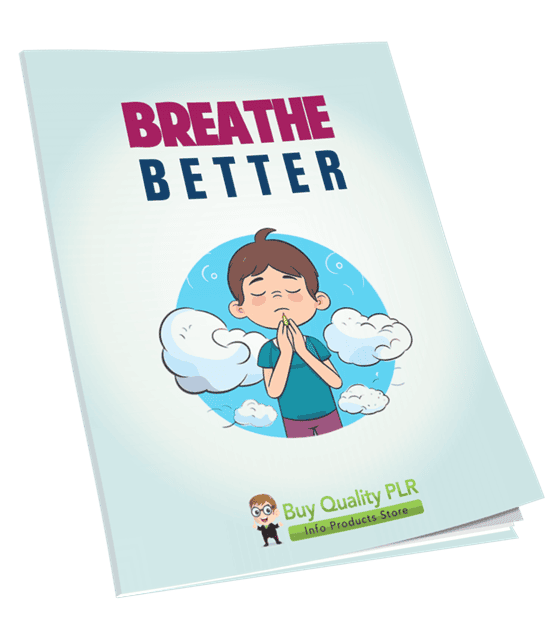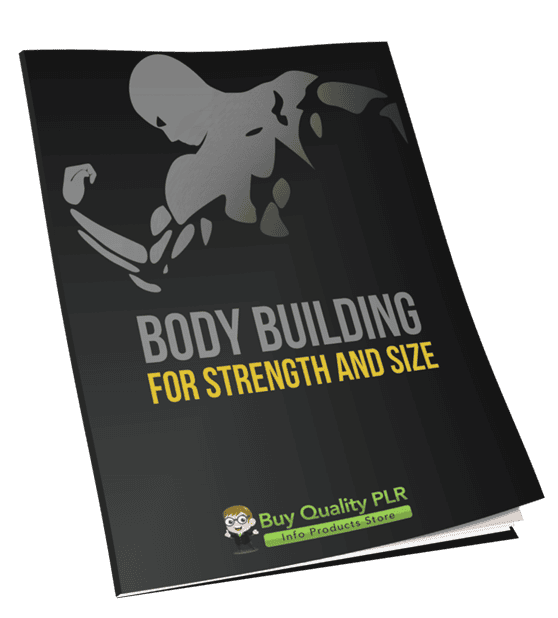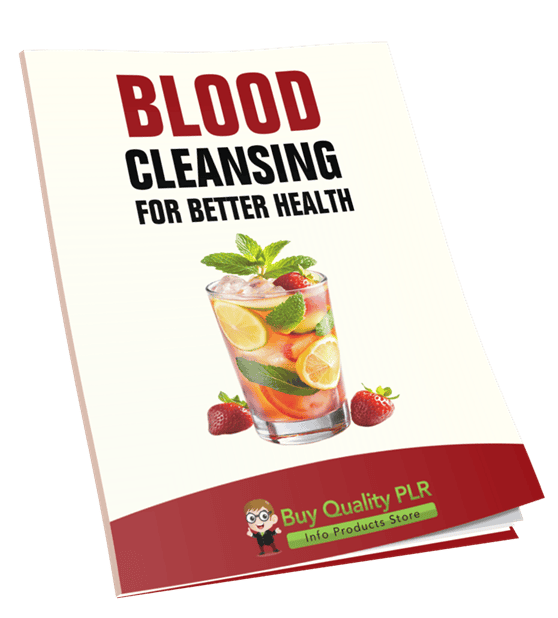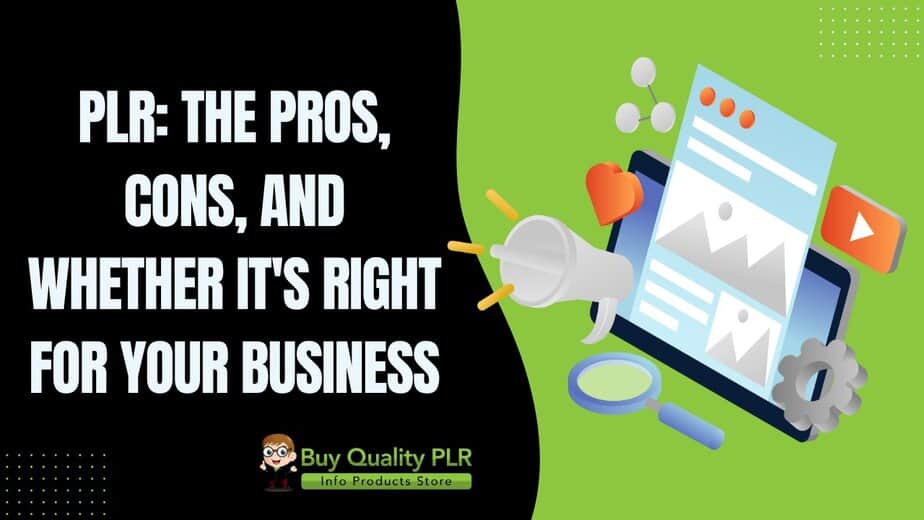
PLR: The Pros, Cons, and Whether It’s Right For Your Business
in Affiliate Marketing, Business Models, Content Marketing, Digital Products, Master Resale Rights, PLR Content, Private Label Rights, Using PLR#plrcontent #privatelabelrights #plrmarketing #onlinebusinesstips #digitalproducts #contentcreation #passiveincome #plrprosandcons #businessstrategy #makemoneyonline #contentrepurposing
Understanding PLR: The Pros, Cons, and Whether It’s Right For Your Business
In the rapidly evolving landscape of digital marketing, the concept of Private Label Rights (PLR) has emerged as a significant tool for content creators and marketers alike. PLR allows individuals and businesses to purchase pre-written content that they can modify, brand, and sell as their own. This article aims to delve into the intricacies of PLR, exploring its benefits and drawbacks, how to effectively utilize it, and whether it is a fitting choice for your business.
What is PLR Content, and How Can You Use PLR?

Defining Private Label Rights (PLR)
Private Label Rights, commonly referred to as PLR, is a licensing agreement that allows the purchaser to edit, modify, and claim ownership of the content. PLR content can include various types of materials such as articles, ebooks, online courses, and more. By purchasing PLR products, marketers gain the flexibility to create content without having to start from scratch. This ready-made content is particularly appealing for those looking to quickly build a library of digital products for their audience.
How to Use PLR Content Effectively
To effectively use PLR content, one must first understand its potential applications. Content creators can adapt PLR articles or ebooks to align with their brand, modify the messaging, or even repurpose the content in different formats, such as videos or infographics. It’s essential to ensure that the content resonates with your audience and fits seamlessly within your overall content marketing strategy. By customizing PLR products, you can enhance your brand’s credibility while also saving valuable time and resources.
Benefits of Using PLR Products in Digital Marketing
The advantages of using PLR products in digital marketing are numerous. Firstly, PLR content is often significantly cheaper than hiring a writer to create original content from scratch, which makes it an appealing option for budget-conscious marketers. Additionally, PLR allows for rapid content creation, enabling marketers to quickly roll out new offerings, such as lead magnets or promotional materials, to engage their audience. Furthermore, high-quality PLR can provide insights and information that can be valuable for your target market, positioning your brand as a knowledgeable leader in your niche.
What Are the Drawbacks of PLR Products?

Common Issues with Quality PLR
While PLR content offers many benefits, it’s important to recognize the common challenges that businesses may face when using these materials. One of the most significant issues is the variability in quality of PLR products. This inconsistency can range from poorly written content to outdated or irrelevant information. Here are a few key points to consider:
1. Inconsistent Content Quality
Not all PLR content is created equal. Some PLR providers offer high-quality, well-researched, and professionally written materials that can serve as a strong foundation for your content strategy. On the other hand, some providers might produce content that rushes, lacks depth, or doesn’t meet industry standards. Low-quality PLR can harm your brand’s reputation if it is not carefully vetted and customized to meet your audience’s needs.
Solution: To mitigate this risk, it’s essential to carefully assess PLR products before purchasing. Look for reputable PLR providers known for delivering high-quality content. If possible, review sample materials to ensure they meet your quality expectations. Also, consider the relevance and timeliness of the information provided in the PLR content to ensure it aligns with current industry standards.
2. Lack of Originality
Many businesses purchase and use the same PLR content, which can lead to a lack of originality. If you use unmodified PLR content as is, it’s likely that other websites or marketers will be using the same content, resulting in duplicate material across the web. This can harm your SEO efforts and decrease the perceived value of your content.
Solution: To stand out from others using the same PLR, always customize the content. Rewrite sections to reflect your brand’s voice, add original insights, and update outdated information. This will help differentiate your materials from others and ensure that your content is fresh and unique. By adding a personal touch, you can make the content more engaging for your audience and improve your search rankings.
3. Legal and Licensing Issues
PLR content comes with certain licensing rights that dictate how it can be used. While you generally have the right to modify, resell, or distribute PLR content, some PLR providers place limitations on how the material can be used. These restrictions could include prohibiting the redistribution of PLR products or limiting the ability to give away PLR content for free.
Solution: Always read the licensing agreement carefully before using PLR content to ensure you are compliant with the terms. Be aware of any resale or distribution restrictions and what you can and can’t do with the content. Understanding these terms will help you avoid legal pitfalls and ensure you’re using the content in accordance with the license.
4. Outdated Information
PLR content, especially in fast-evolving industries like digital marketing or technology, can quickly become outdated. If you purchase PLR articles or eBooks that are not regularly updated, the information may no longer be relevant to your audience. Using outdated content could hurt your brand’s credibility and lead to customer dissatisfaction.
Solution: When using PLR content, ensure that it is regularly updated or customize it to reflect the most current information. This may involve revising statistics, adding new case studies, or referencing the latest trends in your industry. If the PLR content is significantly outdated, it’s often better to create original content from scratch or find a more up-to-date source.
5. Overuse of PLR Content
Another challenge with PLR content is the temptation to overuse it. PLR is easy to acquire and use, but relying too heavily on it can lead to content that lacks depth, originality, and personalized value. This can make your business appear lazy or uninspired, which may affect how your audience perceives you.
Solution: Balance PLR content with your original work. Use PLR to complement your content strategy, but don’t rely solely on it. Incorporate your personal expertise, insights, and experiences to provide unique value to your audience. By offering a mix of original and PLR content, you can keep your website fresh and engaging while still saving time on content creation.
How to Overcome These Challenges
To overcome these common issues and maximize the benefits of PLR, here are a few best practices:
Vetting PLR Providers: Ensure that you source your PLR content from reputable providers who consistently deliver high-quality materials. Look for customer reviews and ratings to gauge the provider’s reliability.
Customizing Content: Always modify PLR content to suit your voice and brand’s values. Personalizing the content will make it unique and more engaging for your audience.
Legal Compliance: Carefully review the PLR license terms before using the content to ensure that you’re adhering to the usage restrictions and avoiding legal complications.
Keep Content Updated: Ensure that your PLR materials are up to date by revising them as necessary. Add the latest information, trends, and insights to keep the content fresh.
Balance with Original Content: While PLR is a great time-saver, make sure to create original content regularly to keep your brand’s voice strong and maintain authenticity.
By addressing these common pitfalls and utilizing PLR content effectively, you can enhance your content strategy and deliver valuable resources to your audience without compromising quality or SEO performance.
Branding Challenges with Reselling PLR Products
One of the primary concerns when reselling PLR (Private Label Rights) products is the branding challenge. Multiple marketers sell PLR products, which increases the likelihood of others in your niche using the same content. This can create a lack of differentiation in the marketplace, making it difficult to stand out from competitors and establish a unique identity. Without proper customization, your PLR content could look exactly the same as what other businesses are offering, leading to brand saturation.
Here’s why this is a critical issue and how you can overcome it:
1. Market Saturation
When multiple marketers use the same PLR content, it becomes difficult to distinguish your offerings from theirs. This market saturation makes it harder to attract new customers because they may perceive your product as just another generic offering with no unique value.
Solution: To combat market saturation, customize the PLR content to fit your brand and target audience. Adding your insights, perspectives, and voice will make the content feel unique and aligned with your business’s identity. This helps to set you apart from others who may be using the same base materials.
2. Lack of Brand Identity
Without proper customization, PLR content can fail to reflect your brand’s personality and message. This lack of personal touch makes it harder for potential customers to connect with your business, and you may end up blending in with your competitors.
Solution: Ensure that your branding is consistently reflected throughout the content. This includes altering the tone, adjusting the message, adding your logo, and integrating visuals that align with your brand identity. Whether it’s articles, eBooks, or email sequences, your PLR materials should feel like an authentic extension of your brand, not just generic content available to anyone.
3. SEO and Keyword Optimization
Often, PLR content includes a set of keywords and phrases that may be general or not specific to your niche. If you’re using PLR materials without making adjustments to SEO, it can lead to poor visibility on search engines and missed opportunities for organic traffic.
Solution: When customizing PLR content, optimize it for SEO by using the right keywords that are specific to your niche. Tailor the content to your audience’s search behaviors by integrating long-tail keywords, adjusting the title tags, and creating compelling meta descriptions. This improves SEO and helps differentiate your content from others using the same PLR.
4. Perceived Value and Trust
PLR content-based products may elicit skepticism from customers due to their perceived “cookie-cutter” nature, so it’s important to alter the content to ensure high quality. Without customization, your PLR products could be perceived as low-effort, reducing the trust and perceived value of your offerings.
Solution: Increase the perceived value of your PLR products by enhancing the content with additional resources, such as bonus materials, exclusive offers, or personalized customer support. Providing extra value can demonstrate that you care about the customer experience and are committed to delivering high-quality products. This helps build trust with your audience.
5. Over-Reliance on PLR
If you rely too heavily on PLR content for your product offerings, you risk creating a business model that lacks originality and long-term sustainability. While PLR can save time, using it as your sole content source without adding your own unique touch will prevent you from truly differentiating your brand.
Solution: Balance your content strategy by using PLR as a foundation, but add your own insights, experiences, and original content to make it truly yours. This could include creating original videos, blog posts, or personalized resources that complement your PLR-based products. By combining PLR with your own ideas, you can create a more authentic and sustainable business.
How to Overcome Branding Challenges with PLR Products
To effectively navigate the branding challenges associated with reselling PLR products, follow these strategies:
Customize the Content: Take the time to rewrite PLR materials to suit your voice and brand. Add your personal experiences, examples, and relevant case studies to make the content unique.
Invest in Design: PLR often comes with basic templates or graphics. Invest in professional design services or use design tools to create high-quality, visually appealing materials that align with your brand.
Enhance with Additional Value: Include bonus content, such as worksheets, checklists, or videos, to make the PLR more comprehensive and valuable. This will enhance the perceived value of the product and set it apart from generic offerings.
Focus on Customer Experience: Provide excellent customer support, ongoing updates, and personalized engagement. Building a strong relationship with your customers is crucial for long-term brand loyalty.
By customizing PLR content and ensuring it reflects your unique brand, you can successfully overcome these challenges and create a memorable and engaging experience for your audience with exclusive content. This not only helps you differentiate yourself in a crowded marketplace but also allows you to build a strong and authentic brand identity that resonates with your target customers.
High-Quality vs. Low-Quality PLR: What to Watch For
When it comes to selecting PLR products for your business, understanding the differences between high-quality and low-quality content is crucial for your success. High-quality PLR can provide immense value to your marketing efforts, while low-quality PLR can damage your brand’s credibility and hinder your results. Here are key factors to consider to ensure you’re investing in the best content for your needs:
1. Writing Style and Clarity
High-quality PLR content is written in a professional, clear, and engaging style. It is well-structured, with logical flow and concise, accurate language. It will be easy for your audience to understand and read, enhancing their experience and trust in your brand. Poorly written PLR, on the other hand, can be riddled with grammar and spelling errors, awkward sentence structures, and a disorganized flow, which can make your audience lose confidence in your brand.
Tip: Avoid duplicate content by customizing your PLR materials to enhance their exclusivity. Look for PLR content that flows naturally, is free from errors, and speaks directly to your audience’s needs. If the content feels clunky or unnatural, it’s probably not worth using.
2. Relevance and Value
High-quality PLR products are designed to meet the needs of your specific audience. They provide valuable information, offer actionable tips, and are in tune with the latest trends or research in the industry. Low-quality PLR, in contrast, may be generic, outdated, or too basic to provide real value.
Tip: Ensure that the PLR content is relevant to your audience’s interests and needs. It should offer something meaningful, whether it’s solving a problem, teaching a new skill, or providing an in-depth guide on a specific topic.
3. Depth of Information
Good PLR should provide enough depth to be useful without being overly complex or verbose. It should cover a topic thoroughly but concisely, giving your readers clear takeaways. Low-quality PLR often lacks depth, offering just surface-level insights or repeating the same information across different sections.
Tip: Check if the content dives deep into the subject matter and provides unique insights or perspectives that aren’t easily found elsewhere. High-quality PLR should make your audience feel like they’ve learned something new and valuable.
4. Formatting and Design
High-quality PLR often comes with well-structured formatting that makes it easy for you to customize and use right away. This includes clear headings, subheadings, bullet points, and possibly relevant images. Low-quality PLR, however, may be poorly formatted, with messy text, lack of headings, and little regard for user-friendly design.
Tip: When evaluating PLR, look for properly formatted content. This makes it easier for you to customize the material and present it in a polished, professional way.
5. Licensing and Permissions
The quality of the license that accompanies a PLR product is also an important factor. A high-quality PLR provider will offer clear, legitimate licensing that allows you to rebrand and customize the product as needed, along with a full set of permissions. Low-quality providers may have unclear or restrictive licenses, leaving you unsure of how you can use the content.
Tip: Always check the licensing agreement. Please ensure the terms are clear and align with your intended use of the PLR content. Look for PLR with clear rights to rebrand, sell, and distribute.
6. Originality and Uniqueness
A major indicator of low-quality PLR is its absence of uniqueness. If the content is generic, overused, or plagiarized, it will hurt your SEO and could potentially harm your reputation. High-quality PLR is original, well-researched, and unique, ensuring it provides real value to your audience.
Tip: While some level of reuse is inevitable with PLR, always choose content that has unique value or a fresh angle. Be cautious of PLR that appears too generic or sounds like something you’ve read countless times.
7. Support and Customer Service
Reputable PLR providers will offer excellent customer support, including assistance with any issues or questions you may have about the content. Low-quality PLR providers might not offer any support, leaving you to navigate issues on your own.
Tip: When purchasing PLR content, consider the available support. A good PLR provider will have responsive customer service and offer additional resources like guides or tutorials for customizing and using the content effectively.
How to Customize Your PLR Content for Your Brand

Best Practices for Modifying PLR Products
Customizing PLR (Private Label Rights) content is essential to ensure that the content aligns with your brand’s voice and offers unique value to your audience. Simply using PLR content “as-is” can lead to generic material that does not resonate with your target market or set you apart from competitors. Here are some best practices for modifying PLR products to help you stand out and maximize their potential:
1. Rewrite Sections to Align with Your Messaging
When you receive a PLR product, one of the first steps is to rewrite sections to better reflect your brand’s voice and messaging. Start by reading through the content and identifying areas where it feels too generic or misaligned with your style.
Tip: Use your own language and tone to make the content feel more authentic. Should your branding have a conversational tone, please ensure the PLR content reflects that style.
Benefit: This helps you differentiate your content from others who may be using the same PLR and allows you to build a stronger connection with your audience.
2. Add Personal Anecdotes or Case Studies
One of the best ways to make PLR content truly unique is by adding personal anecdotes, case studies, or examples that are specific to your experience or your audience’s needs. This enhances the content and builds trust with your audience. People love stories and real-world applications that demonstrate the practicality of the information provided.
Tip: If you have experience with the topic, share your personal journey or success stories. Alternatively, use examples from clients or customers (with their consent) to illustrate key points.
Benefit: Adding personal insights makes the content feel more genuine and tailored, which resonates better with your audience.
3. Incorporate Your Brand’s Unique Perspective
PLR content often comes with a broad or generalized approach. To make it more appealing to your specific audience, inject your own perspective into the content. This could include sharing your unique insights, values, or approach to the topic at hand. By offering a fresh take, you help set your content apart from others in the same space.
Tip: Think about how your brand stands out in your niche. What do you offer that others don’t? Incorporate this unique perspective into the PLR content.
Benefit: This helps establish you as an authority in your field and builds stronger brand loyalty by resonating with the values and needs of your audience through exclusive content.
4. Change the Title and Format
Your PLR product’s success can be determined by its title. If the title is too generic or doesn’t speak to your audience, you risk it not capturing their attention. Change the title to something more catchy, benefit-oriented, and aligned with what your target audience is searching for.
Tip: Use your audience’s pain points or desires in the title. For example, change a generic title like “How to Manage Stress” to something more specific like “5 Proven Stress-Relief Strategies for Busy Professionals.”
Benefit: A compelling title drives engagement and increases the likelihood of clicks, opens, and conversions.
In addition to the title, consider changing the format of the PLR content. If you have a blog post, consider turning it into an infographic, video, checklist, or presentation. This enables you to present the same valuable information in different formats that may better suit your audience’s preferences.
Tip: Repurpose content into formats that your audience consumes most, such as audio or video for podcasts, or slides for presentations.
Benefit: Repurposing content allows you to extend the life of the PLR product and reach a broader audience across different platforms.
5. Add Visual Elements
PLR content often lacks engaging visual components. Adding visuals such as images, infographics, charts, or illustrations helps break up the text and makes the content more visually appealing and easier to digest. Visuals can also reinforce the key points in your content and help your audience remember the information better.
Tip: Use free or paid stock images, design custom graphics, or create infographics that highlight key data or processes.
Benefit: Visuals not only make the content more attractive but can also increase engagement and shareability.
6. Optimize for SEO
PLR content may not always be optimized for search engines. This is an important area to focus on to ensure that your content ranks well in search engines and drives traffic to your site.
Tip: Integrate keywords strategically into your modified PLR content. This includes updating titles, meta descriptions, headers, and throughout the body of the content while keeping it natural and readable.
Benefit: SEO optimization increases the chances of your content being found by potential customers, boosting traffic and conversions.
7. Ensure Accuracy and Relevance
PLR content may not always be up-to-date or perfectly accurate, especially if it has been sourced from older material. Always double-check the facts and update any outdated references. For example, if a PLR article talks about an old marketing technique or outdated statistics, make sure to replace it with current information.
Tip: Regularly review and update your PLR content to ensure it remains accurate and relevant to industry trends.
Benefit: Keeping your content fresh and accurate helps build trust with your audience and strengthens your brand’s reputation as a reliable source of information.
8. Provide Additional Resources
PLR content can serve as the foundation for creating additional resources, such as worksheets, templates, or bonus content. By adding supplementary materials that further support the information in the PLR content, you can provide extra value to your audience and make the content even more comprehensive.
Tip: For a course or ebook, create workbooks or guides that allow your audience to implement the concepts in the PLR content more effectively.
Benefit: Adding extra resources increases the perceived value of the PLR content and makes it more engaging for your audience.
Creating Original Content from PLR Material
Transforming PLR material into original content involves a creative approach. Marketers can take the foundational ideas presented in PLR articles or ebooks and expand upon them, incorporating new research or insights. This process helps in differentiating your content and positions you as an authority in your niche. By infusing your unique voice and perspective, you can create fresh, engaging content that resonates with your audience and encourages loyalty.
Using PLR as a Lead Magnet in Your Marketing Strategy
PLR products can also serve as effective lead magnets in your marketing strategy. By offering customized PLR content, such as an ebook or a series of articles, you can attract potential customers and grow your email list. The key is to provide valuable information that addresses the pain points of your audience, ensuring it aligns with the quality content they expect. When done correctly, using PLR content as a lead magnet can significantly enhance your marketing efforts and lead to increased conversions.
Is Selling PLR Products a Viable Business Model?

Understanding Master Resell Rights (MRR) and Its Benefits
Master Resell Rights (MRR) offer a powerful opportunity for both product creators and resellers in the digital content industry. When you purchase a product with MRR, you are granted the ability to sell the product to others, as well as to offer them the right to resell it further. This creates a cascading effect where not only can you earn money from selling the original product, but your customers can also generate revenue by reselling the product to their own customers.
What Are Master Resell Rights (MRR)?
Master Resell Rights (MRR) are licenses that allow you to sell a digital product to your customers and give them the same rights to resell the product. Unlike standard PLR (Private Label Rights), where you can modify and brand the product as your own, MRR typically does not allow for modification of the product. However, the main advantage of MRR is that it allows for resale—both to direct customers and to other potential resellers.
For example, if you purchase an eBook, course, or software with MRR, you can sell it to customers and allow them to do the same, creating multiple layers of income generation through a scalable business model. This model makes it an attractive option for entrepreneurs looking for a low-risk, high-reward business model.
Key Benefits of Using Master Resell Rights (MRR)
Additional Income Streams: One of the most significant benefits of MRR is that it enables you to generate multiple income streams. Once you sell a product with MRR, your customers can also resell the same product. As a result, you can continue earning from the same product multiple times, and your customers have the potential to earn as well.
Low Initial Investment: Unlike creating a product from scratch, which can involve significant time, effort, and costs, purchasing a product with MRR is a much more affordable entry point. You do not need to worry about content creation, designing, or developing the product. This allows you to focus on marketing and sales.
Expanding Your Reach: MRR products allow you to tap into a wider audience by encouraging your customers to resell the product. As more people resell the product, your exposure grows, potentially driving more traffic to your website or business. This organic expansion can lead to greater brand awareness and increased sales.
Increased Profitability: With MRR, you have the potential to significantly increase your profitability. Once you’ve acquired the MRR for a product, there is minimal ongoing cost to sell it. The profit margin is typically high because you’re selling a digital product with little to no production cost. You can also set your own pricing strategy, offering discounts or bundles to increase sales.
Access to High-Quality Products: The right MRR products are typically professionally developed and well-crafted, which means you can skip the costly and time-consuming process of creating content from scratch. These products can be valuable to your customers, which enhances the customer experience and builds trust in your brand.
Scalability: One of the most attractive features of MRR is scalability. As your customer base grows and your reselling program expands, your income can grow exponentially. There is no upper limit on how many times you can resell the same product. With effective marketing, you can scale your business without constantly needing new products, allowing you to sell products more efficiently.
Things to Keep in Mind When Using MRR
While the benefits are significant, there are some important points to consider when using MRR to sell PLR products:
Quality Control: Since MRR allows others to resell your product, it’s important to maintain high-quality standards. Reselling low-quality or outdated content can damage your reputation and lead to poor customer feedback.
Marketing: To effectively sell MRR products, you’ll need a solid marketing strategy. This can include SEO, social media promotion, email marketing, and other promotional tactics to ensure you stand out in a crowded marketplace.
Legal Considerations: Be sure to thoroughly review the license terms associated with the MRR product. Some licenses may have restrictions, such as not allowing you to offer 100% commission to affiliates or preventing you from altering the product. Be sure you understand what you can and cannot do to avoid any legal issues related to the use of exclusive content.
Maximizing Profits with PLR and Affiliate Marketing
Combining PLR with affiliate marketing strategies can further maximize profits. By utilizing PLR products that complement affiliate offers, you can create bundled packages that provide added value to your audience. For instance, you could offer a PLR ebook alongside affiliate links to related products, creating a comprehensive resource for your customers while earning commission on sales. This dual strategy enhances your offerings and establishes your brand as a go-to resource in your niche.
Case Studies: Successful PLR Product Sellers
Examining case studies of successful PLR product sellers can provide valuable insights into this business model. Many entrepreneurs have leveraged high-quality PLR content to create profitable online courses, subscription services, or membership sites. By customizing and repurposing PLR, they have established brands that resonate with their target audience. These success stories illustrate that with the right approach, selling PLR products can be a lucrative venture.
The Best Practices for Using PLR in Your Business

Choosing High-Quality PLR Products
The first step in integrating PLR into your business is selecting high-quality PLR products. Research various PLR sites and read reviews to find reputable sources that provide valuable content. By investing in quality PLR, you set the foundation for successful content marketing initiatives and enhance your brand’s credibility. Remember, the quality of the content reflects directly on your brand, so prioritize quality over quantity when making purchases.
Integrating PLR into Your Content Marketing Strategy
Integrating PLR into your content marketing strategy requires a thoughtful approach. Consider how PLR content fits into your existing marketing plans and how it can enhance your overall content strategy. Use PLR to fill gaps in your content calendar, promote new offerings, or provide valuable resources to your audience. By strategically incorporating PLR, you can create a cohesive and engaging experience for your customers.
Maintaining Consistency and Quality in PLR Usage
Finally, maintaining consistency and quality in PLR usage is crucial for long-term success. Regularly evaluate the PLR content you use to ensure it aligns with your brand’s evolving needs. Additionally, continue to modify and update PLR products to keep them relevant and engaging. By prioritizing consistency and quality, you not only enhance your brand image but also foster customer loyalty and trust.
Frequently Asked Questions
Q: What is PLR, and how can digital products use it?
A: PLR, or Private Label Rights, allows you to purchase PLR content that you can modify and use as your own. You can use this type of content to create digital products like eBooks, courses, or marketing materials.
Q: What are the pros and cons of using PLR content for my business?
A: The pros include saving time and having access to a wide variety of high-quality content. However, the cons may involve the potential for low-quality content and the risk of others using the same PLR content. It’s essential to evaluate the quality before using it.
Q: Can I change the content of PLR products to fit my brand?
A: Yes, you can modify and use PLR content to fit your brand. This flexibility allows you to make your content unique and better aligned with your digital marketing strategy.
Q: Is PLR content cheaper than creating new content from scratch?
A: Yes, PLR content is cheaper than creating new content from scratch. It allows you to leverage pre-made content while saving time and resources, making it a cost-effective option for scaling a business.
Q: Where can I find free PLR content?
A: There are many websites offering free PLR content. However, it’s important to review the quality and ensure that the free PLR meets your standards for use in your products or marketing materials.
Q: What types of PLR content are available for digital marketing?
A: There are various types of PLR content available, including written content, videos, graphics, and audio. You can choose the type of content that best suits your needs and marketing strategy.
Q: How can I ensure the quality of PLR products to sell?
A: To ensure the quality of PLR products to sell, research the source of the PLR content. Look for reputable sellers who provide high-quality content, and consider reading reviews or samples before making a purchase.
Q: Can I resell the product I create using PLR content?
A: Yes, if you have the resale rights associated with the PLR content, you can resell the product you create. Be sure to read the terms associated with the PLR content to understand your rights.
Q: How can I effectively leverage PLR content in my marketing strategy?
A: To leverage PLR content effectively, customize and modify the content to reflect your brand voice and message. Use it in various ways, such as lead magnets, blog posts, or as part of a larger digital marketing strategy to engage your audience.


